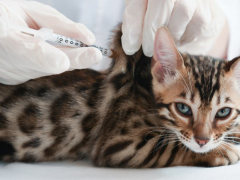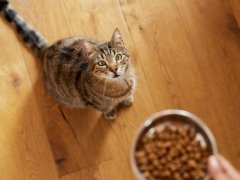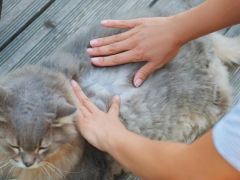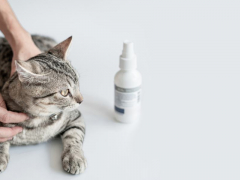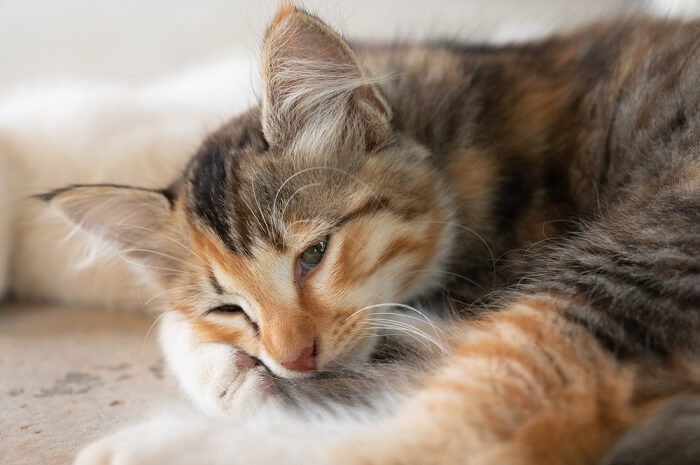
Mirtazapine is a prescription appetite stimulant commonly used in veterinary medicine for cats to encourage interest in food, eating, and to encourage weight gain.
Brands include Remeron and Mirataz. In this article, you’ll learn what mirtazapine is, how it works, different dosage forms available, potential side effects to monitor for, and some commonly asked questions.
Mirtazapine for Cats Overview

About Mirtazapine for Cats

Mirtazapine is classified as a serotonin receptor antagonist and a tetracyclic antidepressant. However, in cats it is not used as a behavioral medication, but more for its benefits for encouraging appetite and eating.
Norepinephrine (NE) is a neurotransmitter which, among many other roles, does act at certain receptors in the body to increase appetite. Mirtazapine is thought to block receptors that would stop NE’s release. This leads to an increase in NE, and a subsequent increase in appetite.
Mirtazapine also blocks serotonin receptors. By blocking certain serotonin receptors, mirtazapine also provides an antinausea and antiemetic (anti-vomiting) effect.
Currently, mirtazapine is available commercially as a generic tablet, as well as the topical transdermal brand Mirataz, which is applied to the skin of the inner surface of the ear flap.
What Does Mirtazapine Do for Cats?
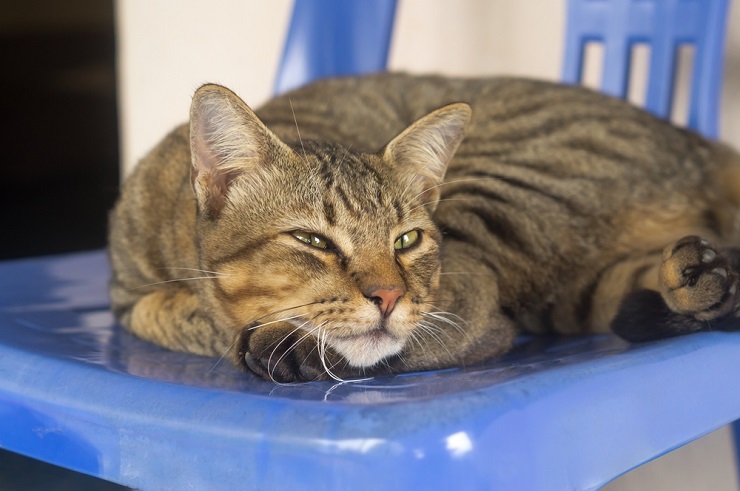
Mirtazapine has been used for many years by veterinarians to aid in stimulation of appetite for cats. This may apply to cats with poor appetites, such as kitties with chronic kidney disease (CKD), or cats with other conditions causing weight loss where we want to encourage more calorie intake.
Side Effects of Mirtazapine for Cats
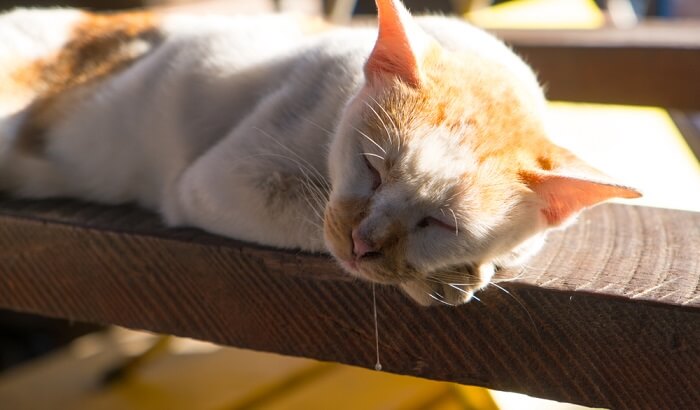
Mirtazapine can cause hypersalivation (drooling) and sedation (excessive sleepiness) in cats.
Mirtazapine is a generally well-tolerated medication in cats, but there are some adverse effects to be aware of and monitor for.
Because mirtazapine does also act as a histamine blocker, sedation may be noted, especially at higher doses.
The next most common side effect is increased vocalization, seen in about 50% of cats. Agitation and gastrointestinal effects like vomiting may be seen in about 25% to 33% of cats.
Abnormal walking, restlessness/hyperactivity, and hypersalivation (drooling) may be seen in just over 10% of cats. Remaining side effects, which affect just about 10% or less of cats, may include increased breathing and heart rate, poor appetite, disorientation, inappropriate elimination, tremors/shaking, and hiding behavior, among others.
Studies looking at mirtazapine use in cats have noted fewer adverse effects when lower doses are used.
For the topical brand Mirataz specifically, about 10% of cats may experience reactions at the site of application on the inner surface of the ear pinna. This can include but is not limited to redness, crusting, scabbing, and residue build-up.
Of reports to the ASPCA Animal Poison Control Center, the most common signs seen in the event of an overdose included excessive vocalizing, agitation, and vomiting. Fortunately, at least in humans, doses upwards of 10 to 30 times the prescribed dose exhibited minimal toxicity, requiring only several hours of observation.
Mirtazapine can interact with a variety of different medications, especially sedatives, pain medications, and medications used to modify behavior. Always make sure to discuss any medications your kitty may be taking with your veterinarian if mirtazapine use is being recommended or prescribed.
Mirtazapine should be used carefully in pets with kidney disease, liver disease, heart disease, or diabetes mellitus. Mirtazpine is used commonly with some of these conditions lending to their impact on appetite, but doses may need to be lower and more carefully monitored.
If you are ever concerned that your kitty may have developed side effects while using mirtazapine, make sure to contact your veterinarian, the ASPCA Animal Poison Control Center (1-888-426-4435), or Pet Poison Helpline (1-855-764-7661) for further advice.
Mirtazapine for Cats Dosage
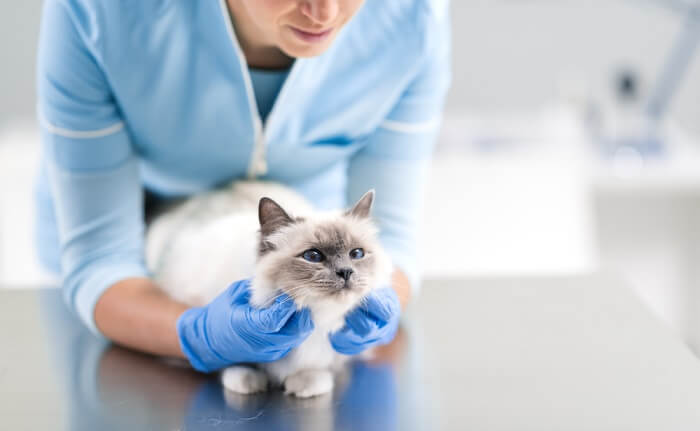
Your veterinarian will recommend the ideal dosage and dosing frequency based on your cat’s individual needs.
The dose for the tablet form of mirtazapine may range from about 2 milligrams up to 3.75 milligrams, depending on goals and tolerance of side effects. The generic tablets only come in two sizes of 7.5 milligrams and 15 milligrams.
Dosing frequency for the oral tablets may only be required once every 48 to 72 hours, but a cat’s appetite should be carefully monitored to determine the best dosing interval.
As the proper dose and frequency may depend greatly on your cat’s needs and any current health conditions, always make sure to discuss mirtazapine dosing for your kitty with your veterinarian first, including current and past health conditions.
The topical product Mirataz, which is a mirtazapine transdermal ointment FDA approved to manage weight loss in cats, has a labeled dose of a 1.5-inch ribbon of the ointment applied to the inner pinna (flap) of the ear once every 24 hours for 14 days. This equates to a dose of about 2 milligrams.
With Mirataz, it is extremely important for the person applying the product to wear gloves to prevent absorption of the product on their own skin. Proper application of the product to the inner surface of the ear pinna is best done using a thumb or forefinger, but as a transdermal product, the medication could be absorbed through the skin of the person applying the product.
Although mirtazapine is also a medication sometimes used in people, accidental absorption of the product should still be avoided.
Conclusion
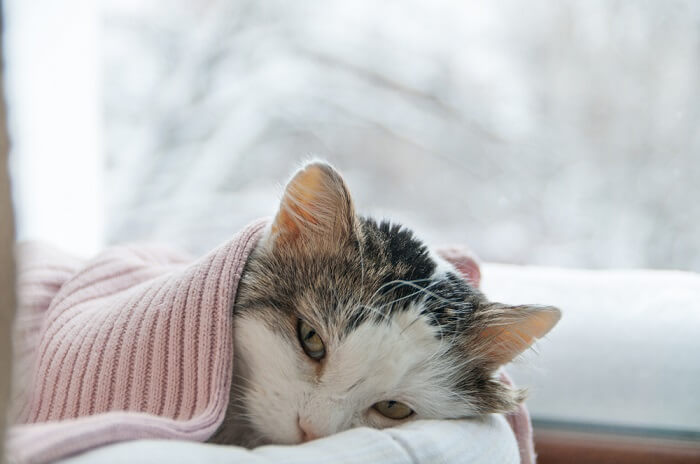
Mirtazapine can be a great medication to help support kitties suffering from weight loss or a poor appetite. The topical brand Mirataz can also provide a welcome route of dosing a medication to a kitty already not eating well or difficult to give oral medication to.
Mirtazapine can exhibit some side effects due to its activity as an antidepressant. However, in a majority of cats, especially those given lower doses, mirtazapine is often well-tolerated and a very useful therapeutic medication.
Drug Dosing Disclaimer: We are only able to provide doses for medications that are FDA approved for use in cats and only as the label guidelines dictate. For medications that are used off-label we can only provide guidelines and safety information for use. Safe and appropriate dosing for off-label medications can only be determined by a primary care veterinarian.
We encourage you to work with your veterinarian to determine if a particular medication is appropriate for your cat. Changing or adjusting a dose for your cat on your own without consulting with a veterinarian can carry risk. We do not encourage use of medications prescribed for human use in pets without first consulting with a primary care veterinarian.
